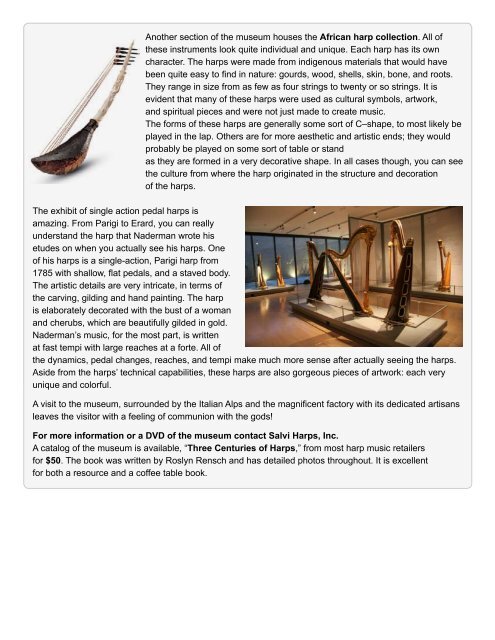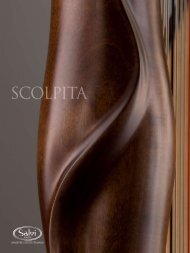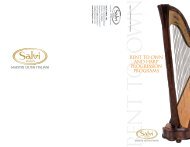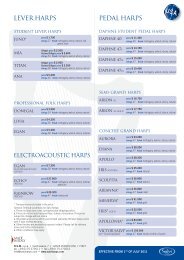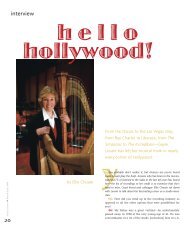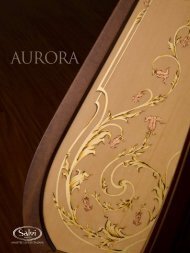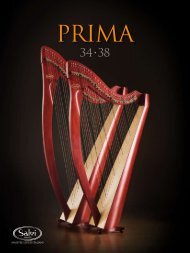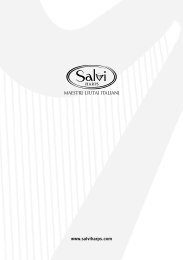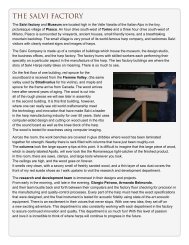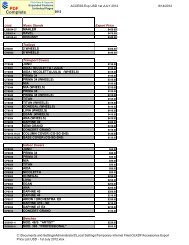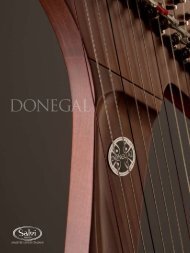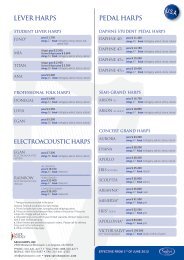THE VICTOR SALVI MUSEUM - Salvi Harps, Inc.
THE VICTOR SALVI MUSEUM - Salvi Harps, Inc.
THE VICTOR SALVI MUSEUM - Salvi Harps, Inc.
You also want an ePaper? Increase the reach of your titles
YUMPU automatically turns print PDFs into web optimized ePapers that Google loves.
Another section of the museum houses the African harp collection. All of<br />
these instruments look quite individual and unique. Each harp has its own<br />
character. The harps were made from indigenous materials that would have<br />
been quite easy to find in nature: gourds, wood, shells, skin, bone, and roots.<br />
They range in size from as few as four strings to twenty or so strings. It is<br />
evident that many of these harps were used as cultural symbols, artwork,<br />
and spiritual pieces and were not just made to create music.<br />
The forms of these harps are generally some sort of C–shape, to most likely be<br />
played in the lap. Others are for more aesthetic and artistic ends; they would<br />
probably be played on some sort of table or stand<br />
as they are formed in a very decorative shape. In all cases though, you can see<br />
the culture from where the harp originated in the structure and decoration<br />
of the harps.<br />
The exhibit of single action pedal harps is<br />
amazing. From Parigi to Erard, you can really<br />
understand the harp that Naderman wrote his<br />
etudes on when you actually see his harps. One<br />
of his harps is a single-action, Parigi harp from<br />
1785 with shallow, flat pedals, and a staved body.<br />
The artistic details are very intricate, in terms of<br />
the carving, gilding and hand painting. The harp<br />
is elaborately decorated with the bust of a woman<br />
and cherubs, which are beautifully gilded in gold.<br />
Naderman’s music, for the most part, is written<br />
at fast tempi with large reaches at a forte. All of<br />
the dynamics, pedal changes, reaches, and tempi make much more sense after actually seeing the harps.<br />
Aside from the harps’ technical capabilities, these harps are also gorgeous pieces of artwork: each very<br />
unique and colorful.<br />
A visit to the museum, surrounded by the Italian Alps and the magnificent factory with its dedicated artisans<br />
leaves the visitor with a feeling of communion with the gods!<br />
For more information or a DVD of the museum contact <strong>Salvi</strong> <strong>Harps</strong>, <strong>Inc</strong>.<br />
A catalog of the museum is available, “Three Centuries of <strong>Harps</strong>,” from most harp music retailers<br />
for $50. The book was written by Roslyn Rensch and has detailed photos throughout. It is excellent<br />
for both a resource and a coffee table book.


